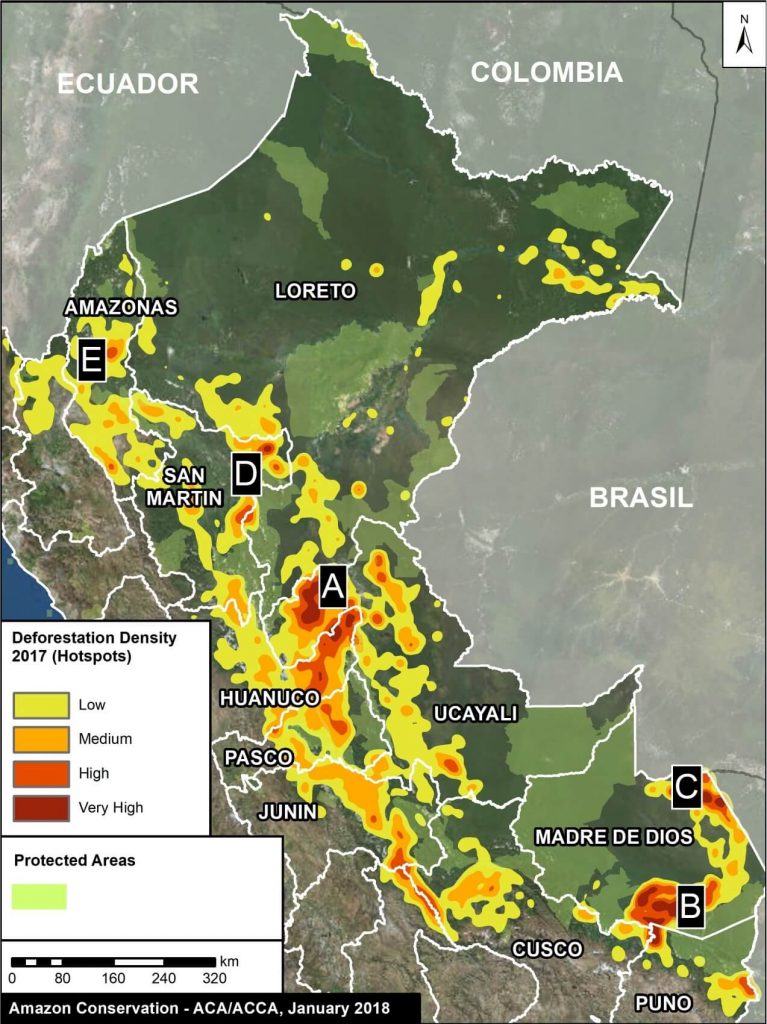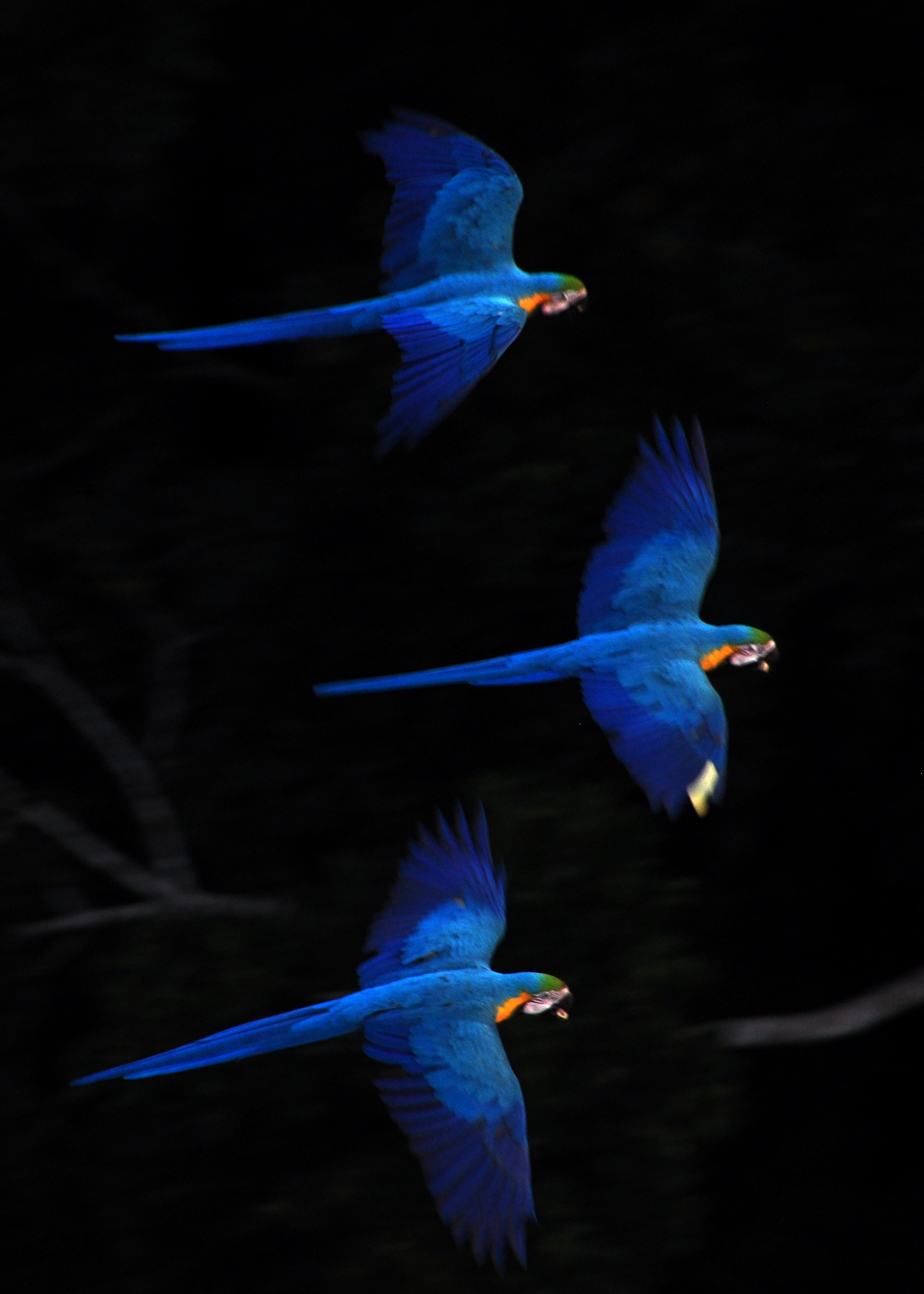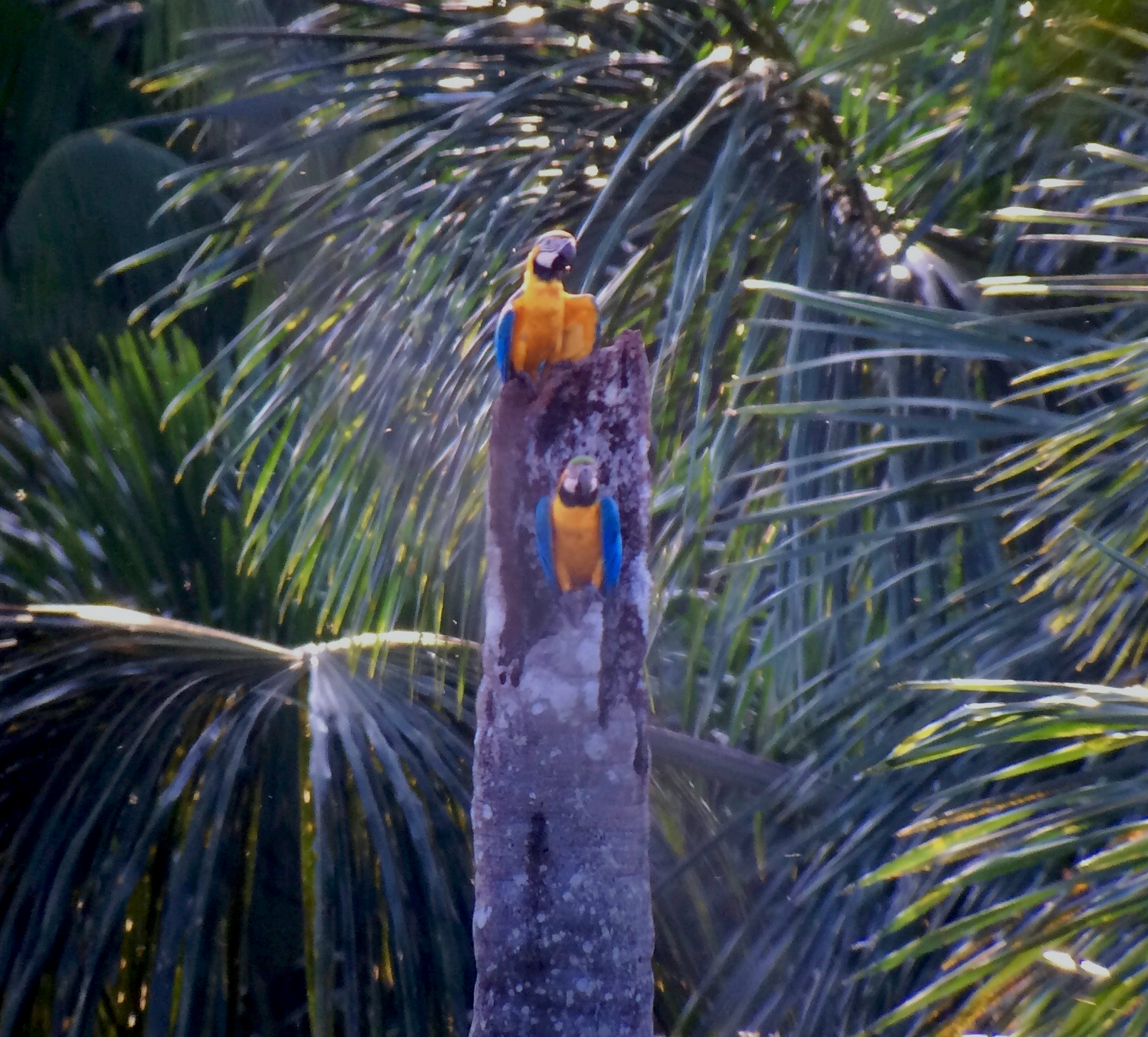Daily and long hikes in the forest always unveil remarkable events in nature, events that could be easily overlooked if our curiosity for understanding nature and its complexity didn’t exist. LABO is currently studying the ecology of the 11 sympatric tinamou species that cohabit Los Amigos forest. Therefore, any observation of these ground-dwelling birds in the field is highly valuable. This past, late November, a Great tinamou nest was found with eight enormous and perfectly bright turquoise eggs. It was found in the middle of primary floodplain forest, two meters off a trail, and right below a tree with big buttresses. Unfortunately, a male tinamou, whose presence would have certainly increased the survival rates of these beautiful eggs, was not found incubating the nest but instead the turquoise color were spotted decorating the dark-brown forest floor during a rainy day at Los Amigos.
Few weeks ago we described tinamou egg coloration, and how male incubation and high nest attendance increase the threats posed by the bright coloration of tinamou’s eggs. Great tinamou (Tinamus major) are one of the largest (1500 g) tinamou species in Amazonia, laying large (56 – 63 mm), turquoise colored eggs between buttresses right on top of brown leaf-litter on the forest floor, without an elaborated and secured nest. Studies on the incubation behavior and nest attendance of Great tinamous have reported that males protect their eggs feverishly, unwilling to leave the eggs and remaining immobile during incubation, even allowing researchers to touch them! But, clutch abandonment can occur when the individual is highly or constantly disturbed, forcing the tinamou to leave and fly quickly out of the nest. Unlike other birds such as emperor penguins, Great tinamous do not choose and have one partner throughout their life but instead they are highly promiscuous. A female mates with different males, and then lays the eggs that will be incubated by the males. Males can incubate clutches of a single female (3 eggs) or of several females (up to 8 eggs).
The Great tinamou clutch (8 eggs) found at Los Amigos, was most likely laid by several females and abandoned by the male tinamou after constant human disturbance (i.e. researchers presence along the trail) near the nest. A camera trap was deployed near the clutch in order to record the -hopefully- return of the male tinamou or most likely observe their predation. The male tinamou did not come back, but instead of being left with nothing exciting happening to the nest, the camera trap recorded several independent moments of predation. The nest was frequently visited by rodents, three times by a tayra (Eira barbara), and four times by a white-throated toucan (Ramphastos tucanus). During the total number of visits of the tayra and toucan, they took 4 and 3 eggs each respectively. The remaining egg could have broken, with the content being eaten by the rodents or tayra that was sighted once without taking any egg from the nest. All these events happened in one month, after which the clutch vanished, leaving us with the hope that somewhere else in Los Amigos forest, another male is peacefully incubating a tinamou clutch!



 A study conducted in Madre de Dios analyzed the advantages of managing M. flexuosa palm swamps to protect the nesting ecology and population of blue-and-yellow macaws. This was done in a small section of a palm swamp by cutting the top of the palms and removing the understory vegetation. Although it might seem like a drastic management tool, the study reported that cut palms persisted from 4 to 7 years, and were occupied by macaws’ nest at a rate of 24%! From this data, authors suggested that cutting 5 palms annually will generate areas of ~20 dead palms that could be used by 6 or more pairs of macaws every year, thus increasing the reproductive success of blue-and-yellow macaws. This could also be used for ecotourism purposes. In fact, Los Amigos has M. flexuosa palm swamps where blue-and-yellow macaws thrive together with scarlet and red-and-green macaws! The protection of this habitat is vital for their survival, and reminds us how amazing and enchanting the Amazon rainforest is, and how connected every organism is with this immense forest.
A study conducted in Madre de Dios analyzed the advantages of managing M. flexuosa palm swamps to protect the nesting ecology and population of blue-and-yellow macaws. This was done in a small section of a palm swamp by cutting the top of the palms and removing the understory vegetation. Although it might seem like a drastic management tool, the study reported that cut palms persisted from 4 to 7 years, and were occupied by macaws’ nest at a rate of 24%! From this data, authors suggested that cutting 5 palms annually will generate areas of ~20 dead palms that could be used by 6 or more pairs of macaws every year, thus increasing the reproductive success of blue-and-yellow macaws. This could also be used for ecotourism purposes. In fact, Los Amigos has M. flexuosa palm swamps where blue-and-yellow macaws thrive together with scarlet and red-and-green macaws! The protection of this habitat is vital for their survival, and reminds us how amazing and enchanting the Amazon rainforest is, and how connected every organism is with this immense forest.